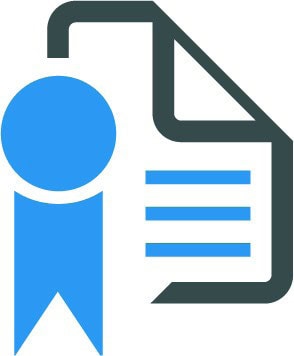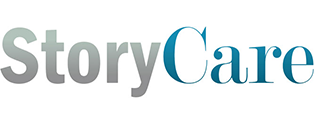135
Instructor’s Guide – If It Was Your Mom
Overview:
This story is about the impacts of medication errors. Distractions and interruptions can cause human error that may not be caught by other team members. Patients and/or family members are witnesses to their care and can provide cross-monitoring to prevent errors from occurring.

Primary Learning Outcomes
After completing this lesson, the student will be able to:
- Examine and describe team practices to promote cross-monitoring of high risk procedures including medication administration.
- Summarize policies and practices that can limit distractions and multi-tasking during critical care practices.
- Describe processes for including patients and family members before each important procedure or medication administration, informing them of processes and risks, and listening to any concerns.

QSEN Pre-Licensure Competencies
The following QSEN competencies are addressed in this lesson:
- Safety: Minimizes risk of harm to patients and providers through both system effectiveness and individual performance.
- Patient-Centered Care: Recognize the patient or designee as the source of control and full partner in providing compassionate and coordinated care based on respect for patient’s preferences, values, and needs.

QSEN Teamwork & Collaboration Enrichment
TeamSTEPPS Best Practice: Cross-Monitoring
Team Strategies to Enhance Performance and Patient Safety (TeamSTEPPS) is an evidence-based set of teamwork tools, aimed at optimizing patient outcomes by improving communication and teamwork skills among health care professionals.
Cross Monitoring – Cross Monitoring is used by fellow team members to help maintain situation awareness and prevent errors. Commonly referred to as “watching each other’s back,” it is the action of monitoring the behavior of other team members by providing feedback and keeping track of fellow team members’ behaviors to ensure that procedures are being followed appropriately. It allows team members to self-correct their actions if necessary. Cross monitoring is not a way to “spy” on other team members, rather it is a way to provide a safety net or error-prevention mechanism for the team, ensuring that mistakes or oversights are caught early. When all members of the team trust the intentions of their fellow team members, a strong sense of team orientation and a high degree of psychological safety result.
Students will answer reflection questions upon completing the story. These questions are aligned with the QSEN competencies and are designed to help the student reflect on both the content of the story and the QSEN competencies addressed by the story.
*Following each question are some potential answers
- Why is cross-monitoring an important practice? How was it illustrated in this story?
A: Cross-monitoring is one way to check the accuracy of another nurse. This should be done every time a “high alter” medication is given. It includes not only checking the doctor’s order, but also ensuring it is the correct dosage.
- How can we make sure our cross-monitoring of important procedures or medication administrations is not compromised by multitasking or staff changes?
A: One way is to ensure staff are not interrupted when administering medication. At some hospitals this is done by wearing a vest that indicates medications are about to be administered and that all side conversations must be stopped.
- How can we include the patients and families as members of the clinical care team and ensure that they have the opportunity to ask questions and express concerns before important procedures or medication administrations?
A: The patient and family members should feel encouraged to be a part of the team. They often have knowledge and experience the healthcare member may benefit from knowing.
Discussion Questions:
Use discussion questions for face to face or online discussion boards to get students to further reflect on the content of the story together.
*Following each question are some potential answers
- What can we learn from this story?
A: That no one double checked the dosage or strength of the medication. It is not enough to only check the doctors order, but the dosage as well.
- What might have happened if Lucy had not advocated for her patient, or if Cynthia had not been there to advocate for her mother?
A: The patient would have received an extremely high and potentially lethal dose of the medication.
- What if Inez was your mom? How does that change your perspective on the story?
A: Each of us want the best care to be given to our parents. This is a great example to keep in mind when patients or family members want to know more about medication or procedures their loved ones are receiving.
Suggested Classroom Mastery Activities:
These activities can be tailored for individuals or groups in a face to face or online setting.
- Read “The Human Factor: The critical importance of effective teamwork and communication in providing safe care” and create a presentation on the importance of cross monitoring and other preventative actions that can help increase patient safety during high risk procedures.
- Work with a partner to generate a list of policies and practices that can limit distractions and multi-tasking during critical care procedures. Create a poster of your top ten reminders for limiting distractions and focusing on patient safety.
- Create a checklist to assist medical staff in working with patients and their families in critical care situations. What can they do on a regular basis to include patients and families as full partners in their care?

Measuring Student Mastery:
| Learning Outcome | Level 1 | Level 2 | Level 3 |
| Examine and describe team practices to promote cross-monitoring of high risk procedures including medication administration. | Student struggles to examine and describe team practices to promote cross-monitoring of high risk procedures including medication administration. | Student can examine and describe some team practices to promote cross-monitoring of high risk procedures including medication administration, but needs further practice. | Student can examine and describe team practices to promote cross-monitoring of high risk procedures including medication administration. |
| Summarize policies and practices that can limit distractions and multitasking during critical care practices. | Student struggles to summarize policies and practices that can limit distractions and multitasking during critical care practices. | Student can summarize some policies and practices that can limit distractions and multitasking during critical care practices, but needs further practice. | Student can accurately summarize policies and practices that can limit distractions and multitasking during critical care practices. |
| Describe processes for including patients and family members before each important procedure or medication administration, informing them of processes and risks, and listening to any concerns. | Student struggles to describe processes for including patients and family members before each important procedure or medication administration, informing them of processes and risks, and listening to any concerns. | Student can describe some processes for including patients and family members before each important procedure or medication administration, informing them of processes and risks, and listening to any concerns, but needs further practice. | Student can describe processes for including patients and family members before each important procedure or medication administration, informing them of processes and risks, and listening to any concerns. |

For additional information on improving team communication, please consult the following articles and resources in Further Reading:
- The Human Factor: The critical importance of effective teamwork and communication in providing safe care.
- HTT Patient Experience White Paper
- Berwick on Patient Centeredness
- Achieving an Exceptional Patient and Family Experience of Inpatient Hospital Care
- TeamSTEPPS Essentials

Story-Specific Best Practices and Proven Tools:
In addition to the ideas generated by students and mentioned in the activities, there are established best practices that may be appropriate to introduce or reference during this lesson to support communication. Some best practices to consider for improving team communication include:
- Call Out
- Advocacy and Assertion
- Check Backs
- Bedside Handoffs
- Collaboration
- “Speak Up”
- Cross Monitoring
- STEP
- CUS
- AskMe3
- Handoff
- 3Ws – Who I am, What I am Doing, Why I Care
- Two-Challenge Rule
- Handoff
